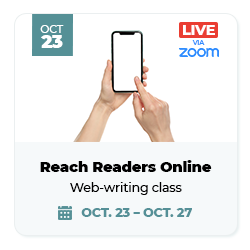Put the hot stuff up top with the 1-2-3-4 test
Web visitors spend 74% of their time on the first two screens, just 26% on all remaining screens, according to the Nielsen Norman Group.

So don’t blow your top.
To reach mobile web visitors up top, communicate the gist of the message in the first four elements of the web page:
1. Headline
Tell the story, don’t tell about the story. “Hallmark doubles profit-sharing contribution,” for instance, not “Benefits changes announced.”
And don’t even get me started on label headlines: “Benefits changes” is not a headline.
Before:
Preventing and declaring conflicts of interest
This buries the topic behind 25 characters worth of –inging words. Plus, it’s unclear: Who’s preventing? Who’s declaring?
After:
Conflicts of interest: How do you handle?
This moves the topic to the top and clarifies who’s responsible.
2. Deck.
Deliver a secondary angle for news stories and a summary for benefits and feature stories. Don’t drop this essential element: 95% of web page visitors look at the deck.
Before:
The writer dropped the deck, missing 25% of her chance to get the word out within the top four elements of the story.
After:
Conduct all your business ethically with our new policy
The new deck adds the benefit to the readers and introduces the new policy.
3. Lead
Show, don’t tell. Leads that illustrate the point with concrete material like stories bring the point to life for readers. And they draw 300% more readers and 520% more reading, according to a split test by Alex Turnbull and the Groove HQ.
Before:
I think I’d read 520% more of this if it were 15% more colorful.
After:
Just a light touch of detail makes this piece more engaging, puts the reader in the story and brings the message to life.
4. Nut graph
Put the story into a nutshell in the second paragraph. Don’t drop the deck: 95% of web page visitors read the deck, so it’s a key element for communicating to skimmers and other nonreaders in a hurry.
Before:
I’m sure this is all true, but it doesn’t define the story and move it forward. I’d consider this background rather than a nut graph.
After:
Here, we make the story snappier and get that policy link up among the first four elements.
Can you get the gist of the story from the first four elements? If so, congratulations! You pass the 1-2-3-4 test.
How can you reach readers where their eyes are?
Web visitors spend 57% above the fold, or on the first screen of a web page, according to the Nielsen Norman Group. They spend 74% on the first two screens.
 Find out how to reach visitors where their eyes are at Reach Readers Online — our web-writing workshop starting Oct. 23.
Find out how to reach visitors where their eyes are at Reach Readers Online — our web-writing workshop starting Oct. 23.
There, you’ll learn how to stop dropping the best-read element on your web page … how to avoid getting your headline cut off on smartphones … how to get found with Ann’s simple tricks and tools for SEO … and how to overcome the obstacles to reading on the screen to get the word out on mobile devices.
Save up to $100 with our group discounts.
